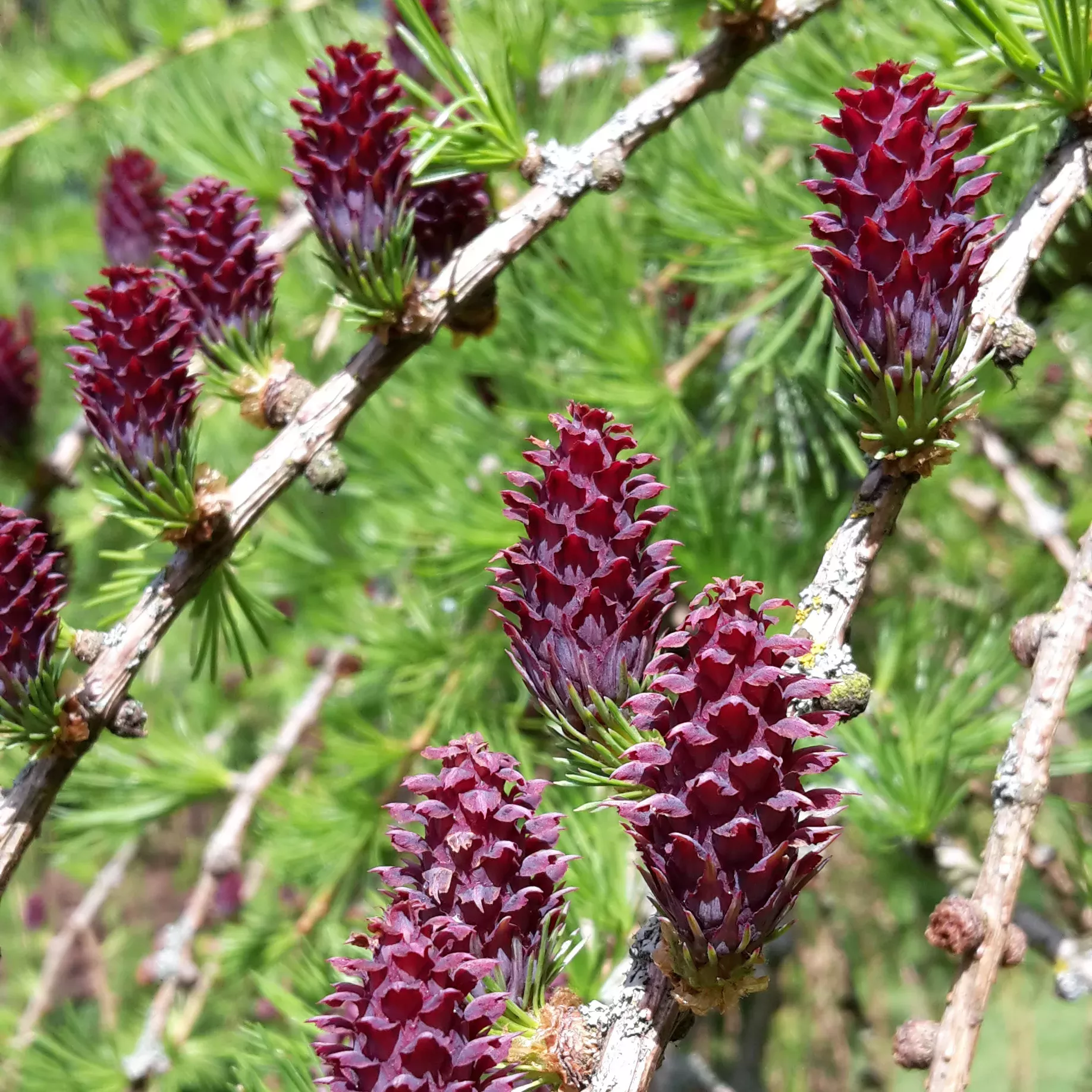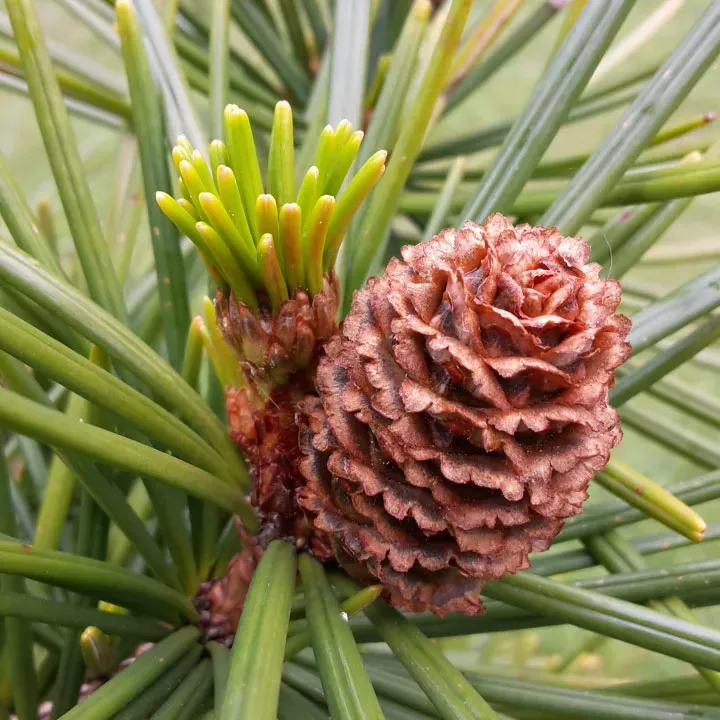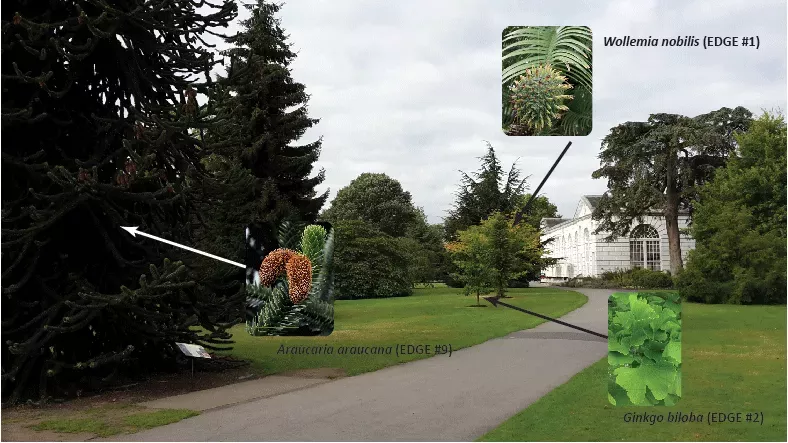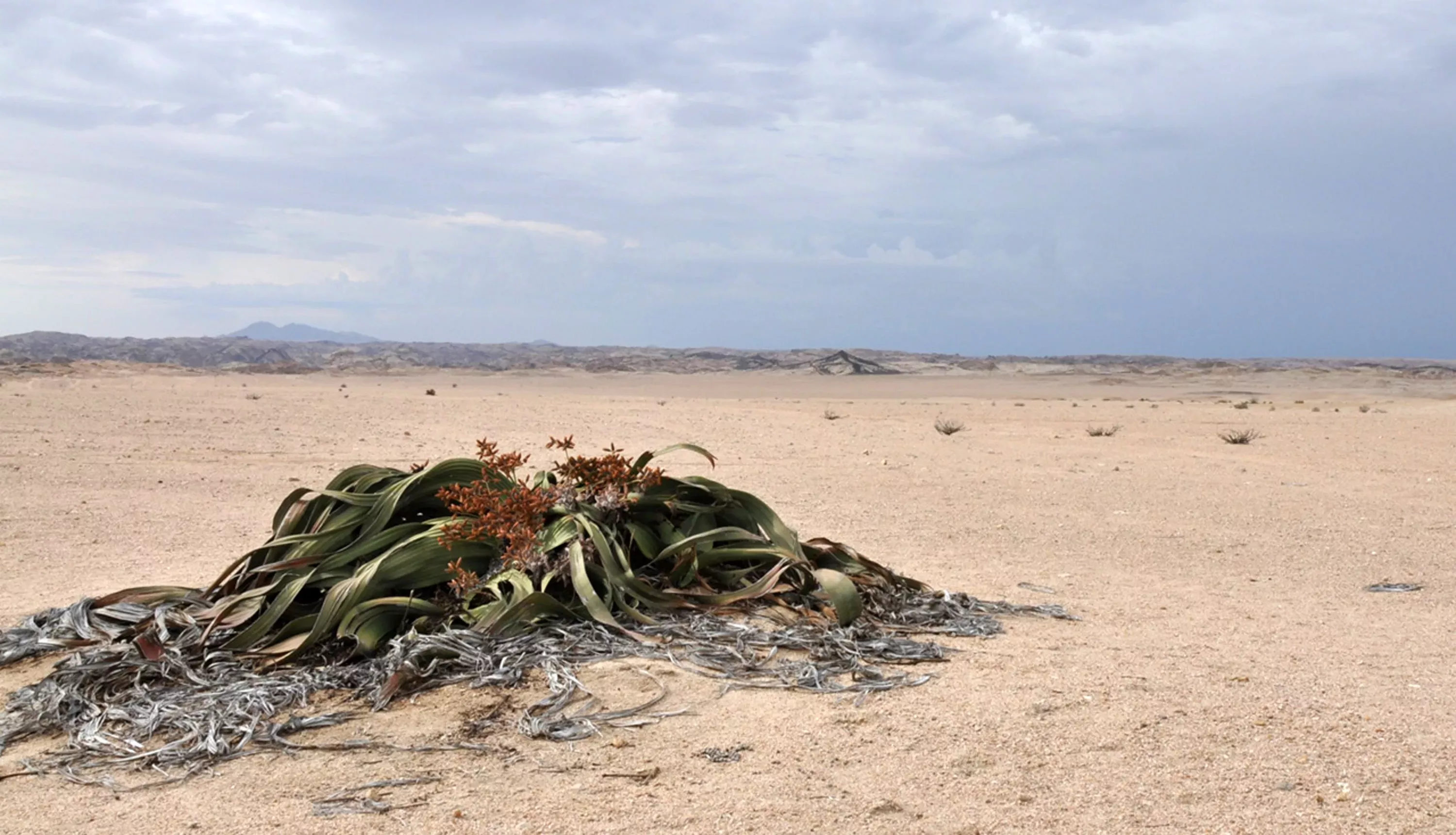1 October 2018
Gymnosperms on the EDGE of extinction
Researchers at Kew have identified the most Evolutionary Distinct and Globally Endangered species of gymnosperms. Felix Forest explains.

Which species and areas should be prioritised in conservation programmes is a persistent question. To say that it is a difficult question to address is somewhat an understatement, especially when resources are scarce, hence the expression “agony of choice” that some have used to describe this conundrum. Many approaches have been used to prioritise conservation actions, such as the identification of biodiversity hotspots -regions with high species endemism threatened by human activities.
One of these approaches is the Evolutionary Distinct and Globally Endangered (EDGE) method, which ranks species based on their evolutionary distinctiveness (evaluated using phylogenetic trees - diagrams that depict the evolutionary relationships of species) and the extinction risks they face based on IUCN (International Union for Conservation of Nature) Red List assessments. It was first applied to mammals a decade ago and resulted in the establishment of the EDGE of Existence programme, a successful conservation project led by the Zoological Society of London. Priority lists for other animal groups have since been added to the programme (birds, amphibian, corals, reptiles), but no plant group had been assessed extensively using this approach. Until now.
Gymnosperms on the EDGE
Gymnosperms are the first group of plants for which an EDGE priority list has been drawn. It will also be the first group of plants to be linked to the EDGE of Existence programme of the Zoological Society of London. Gymnosperms are a relatively small group (just over 1,000 species) of seed-bearing plants that differ from angiosperms, the flowering plants, by not having their seed enclosed in an ovary. Living gymnosperms comprise four distinct groups: ginkgo, conifers, cycads, and gnetophytes. They are one of the most threatened groups of living organisms on Earth, with 40% of the species at high risk of extinction - about twice as many as the most recent estimates for all plants. With such a high proportion of threatened species, urgent action is required to secure their future through an objective prioritization approach.
In this study, we used a phylogenetic tree reconstructed using DNA sequence information to determine how evolutionary isolated (or not) each species of gymnosperms is. This is the evolutionary distinctiveness of EDGE, or ED. The information present in the DNA sequences vary between species and the less related two species are, the greater will be the variation in their DNA sequences. This variation is represented by difference in the length of the branches that links each species in this phylogenetic tree. The Evolutionary Distinctiveness of a species is calculated by adding up the length of these branches divided by the number of species they bridge. The more relatives a species has, the lower will be its evolutionary distinctiveness.


The other aspect of EDGE is the extinction risk that a species faces. This information is found in the conservation assessment from the Red List produced by the IUCN. The combination of both values results in the EDGE score of a species. All of these scores can then be ranked to produce a priority list for conservation focussing on the most evolutionary distinct and at risk of extinction species in a particular group.


Among the twenty most EDGE species of gymnosperms, eighteen belong to four conifer families, Araucariaceae (monkey puzzles), Cupressaceae (cypresses, redwoods), Podocarpaceae (yellowwoods), and Taxaceae (yews). The gymnosperm with the highest EDGE score is the Australian endemic Wollemi pine (Wollemia nobilis) from the Araucariaceae family, which was discovered in the Blue Mountains of Australia in 1994, in temperate rainforests found in narrow sandstone ravines. Before its discovery, it was only known from the fossil record and has since been labelled as a living fossil by some. Ginkgo biloba is found in second position due to its isolated position as the only member of the order Ginkgoales. While it is a common tree in gardens and parks around the world, it exists in the wild in only a few natural populations in China. Araucaria angustifolia, another member of the family Araucariaceae is in third position. Its original distribution range in Brazil and Argentina has decreased by 97% in the last century and is now considered a Critically Endangered species. We found the kauri tree, Agathis australis (Araucariaceae) in fourth position, a large tree from northern New Zealand. Acmopyle sahniana (Podocarpaceae), one of only two species in this genus, is fifth on the list. Less than 200 mature individuals of this species remain on the islands of Fiji. And the list continues.
See many of the top EDGE gymnosperm species at RBG Kew!
You can see many of the top EDGE gymnosperms in the living collections at Kew. You can find two specimens of the Wollemi pine (Wollemia nobilis; Araucariaceae; EDGE #1) near the Orangery, one of them planted by the Duke of Edinburgh for Kew’s 250th anniversary in 2009. This specimen is found next to a specimen of Ginkgo biloba (Ginkgoaceae; EDGE #2), planted on the same day by Her Majesty the Queen. So, the top two EDGE gymnosperm species stand close together at Kew! A much more grandiose specimen of ginkgo, one of the “Old Lions” trees, among the first of its species to be planted in the UK and dating back to 1762, can be found a bit further, half way between the Orangery and the Princess of Wales Conservatory. Nearby, within view of the Orangery terrace, a large specimen of monkey puzzle (Araucaria araucana; EDGE #9) is impossible to miss, while a young Japanese umbrella pine (Sciadopitys verticillata, the only member of family Sciadopityaceae) goes almost unnoticed next to this giant. While Sciadopitys is ranked #385 on the EDGE list, it is the gymnosperm with the second highest evolutionary distinctiveness (ED), after ginkgo. Just a few meters away, across the path, stands a specimen of dawn redwood (Metasequoia glyptostroboides; EDGE #12), a deciduous species of conifer originally from China.

A walk through the gardens and glasshouses will reveal many more fascinating gymnosperms, including several other members of the top 20 EDGE gymnosperms such as Araucaria angustifolia (EDGE #3), Glyptostrobus pensilis (EDGE #7), Microcycas calocoma (EDGE #8), Cunninghamia konishii (EDGE #11), Torreya taxifolia (EDGE #13), Sequoia sempervirens and Sequoiadendron giganteum (equally placed EDGE #15). There are many more gymnosperms at Kew, including Welwitschia mirabilis in the Princess of Wales Conservatory, a peculiar plant found only in the Namib desert in southern Africa and a specimen of Encephalartos alstensteinii in the Palm House, the oldest plant pot in the world. How many can you find?

References
Forest, F., Moat, J., Baloch, E. et al. (2018). Gymnosperms on the EDGE. Scientific Reports 8:6053. Available online.
